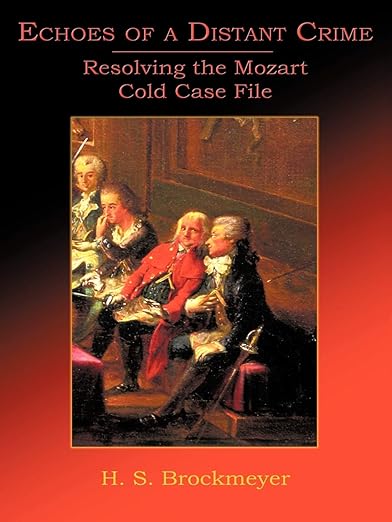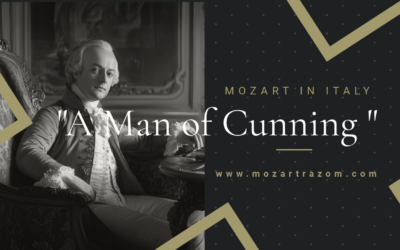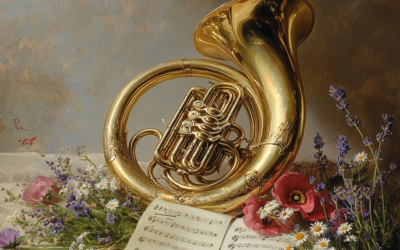Unveiling Hidden Plots
The True Caregiver
Article written by H. S. Brockmeyer
Wolfgang Amadeus Mozart’s final days have always been shrouded in mystery, both due to the circumstances of his death and the ambiguity surrounding who genuinely cared for him as his life ebbed away.
The True Caregiver by H. S. Brockmeyer invites us to reassess whether it was Mozart’s wife, Constanze, or her sister, Sophie Haibl, who provided true devotion during those distressing moments.
By using letters, diaries, and firsthand accounts, Brockmeyer examines emotional dynamics, medical practices, and religious tensions, encouraging readers to question the historical narratives we have long taken for granted.
“Memory, myth, and selective storytelling have crafted the Mozart we think we know, but the truth is far more complicated.”
Echoes of a Distant Crime: Resolving the Mozart Cold Case File
Unraveling the Mystery Behind the Final Moments and Support System of Wolfgang Amadeus Mozart.
Wolfgang Amadeus Mozart’s final days have always been shrouded in mystery, not only because of the enigmatic circumstances surrounding his death but also due to the ambiguity about who truly cared for him as his life ebbed away. In The True Caregiver by H. S. Brockmeyer, we are invited to reassess long-held beliefs about the key figures by Mozart’s side during those distressing last moments.
One topic that has never been debated—or even noticed until now—is the role of Sophie Haibl in Mozart’s final days. Brockmeyer is the first to uncover the significance of the plaque over their apartment in Mozartplatz and the gravestone in the Kommunalfriedhof in Salzburg, which honor Sophie as the ‘true caregiver’ in Mozart’s last hours. She invites us to question why Mozart died in Sophie’s arms, not Constanze’s, and explores Sophie’s often-overlooked impact as a devoted caretaker.
Using letters, diaries, and testimonies from contemporaries, the author paints a vivid picture of Mozart’s final days. She examines Sophie’s account of Mozart’s death, including the controversial tale of the physician, Dr. Closset, who preferred attending the theater over attending the stricken composer. The narrative delves into the medical practices of the time, such as Mozart’s infamous bloodletting treatment, and questions the effectiveness—and perhaps the negligence—of these methods.
Brockmeyer expands on the emotional and social dynamics at play. She explores how Sophie’s story has been elevated over the years, potentially to shield Constanze from criticism or to create a more compelling narrative of sisterly devotion. Sophie’s account, though filled with intimate details, is analyzed for possible exaggerations or errors, as she recounted them many years later. Brockmeyer critically assesses whether Sophie’s memory, shaped by time and perhaps her desire to appear virtuous, stands up to scrutiny against the surviving historical evidence.
Constanze emerges as a complex and often misunderstood figure. In previous accounts, she has been harshly judged and accused of selfishness or neglect, yet Brockmeyer urges a reconsideration. She argues that despite the criticisms, Constanze played a crucial role in preserving Mozart’s legacy. After his death, she worked tirelessly to promote his music and secure his place in history. Brockmeyer emphasizes that this dedication, often overlooked, shaped our modern understanding of Mozart’s genius.
The article also touches on broader cultural and religious tensions. Brockmeyer doesn’t shy away from discussing the strained relationship between Mozart’s Masonic beliefs and the Catholic Church. One of the most poignant details is the refusal of a priest to administer the last rites. This refusal deepens the mystery and adds a layer of religious and philosophical conflict that colored the composer’s final days. The author also highlights how Mozart’s ties to the Freemasons may have influenced both his life and the circumstances surrounding his death, complicating our understanding of those around him.
In the end, Brockmeyer acknowledges that some details about Mozart’s death may forever remain a mystery. Still, she encourages readers to think critically about who truly cared for Mozart and to question the accounts we often take for granted. This nuanced approach reveals the complexities of human relationships and the ways in which history is constructed, layer by layer, through memory, myth, and selective storytelling.
![Sophia_Weber_Haibl Portrait of Maria Sophie Weber (1763[1]–1846), singer, the younger sister of Wolfgang Amadeus Mozart's wife, Constanze](https://www.mozartrazom.com/wp-content/uploads/2024/11/Sophia_Weber_Haibl.jpg)
Portrait of Maria Sophie Weber (1763–1846)
To uncover more about the compelling narrative surrounding Mozart’s final days and the complex roles played by those closest to him, you can download the complete article by H. S. Brockmeyer at the link below.
Download the full document (pdf)
You May Also Like
A Revolutionary Encounter at Cremona Musica
Sharing insights on Mozart and the Neapolitan school at Cremona Musica, the premier global stage for music and culture.
#1 A Man of Cunning
In the end, Leopold Mozart’s life was a testament to survival in a world where his talents were often overshadowed by those of his more gifted contemporaries and his own son. While his “Violinschule” remains a notable contribution to music pedagogy, it is clear that Leopold’s legacy is as much about his ability to navigate the challenges of his time as it is about his musical achievements. His story is one of ambition, adaptation, and the lengths to which one man would go to secure his place in history, even if that place was built on borrowed foundations.
@MozartrazoM
Mozart’s Letters: A Legacy of Disappearances, Edits, and Forgeries
Mozart’s letters reveal missing originals, questionable authorship, and forgeries, adding complexity to his legacy.
The Curious Case of Mozart’s “Lullaby”
Though long credited to Mozart, the lullaby “Schlafe mein Prinzchen, schlaf ein” hides a murky history. Initially published by Nissen, Constanze’s second husband, it has endured as one of Mozart’s supposed works—despite a trail of doubts. In 1798, Constanze herself noted sending “another piece of Mozart’s in place of the lullaby,” raising questions about its origins. By the 20th century, researchers revealed it as the work of lesser-known composers, yet it remains deceptively tied to Mozart, its myth surviving through mere footnotes.
The Contradictions Behind Mozart’s Horn Concerto K.412
The authenticity of Mozart’s Horn Concerto K.412 remains hotly debated, as the work bears numerous contradictions in its manuscript history. The first movement may be original, but what about the rest? The inclusion of Franz Xaver Süssmayr and later editorial meddling raises serious questions about what we are really listening to when we hear this ‘Mozart’ concerto.
The Questionable Attribution of Mozart’s Offertorium K.34
Attributing Offertorium K.34 to Mozart is not just misleading, it reflects the careless methods used by 19th-century scholars to inflate his legacy. Without an autograph or solid evidence, this work should not be considered part of his output.”







